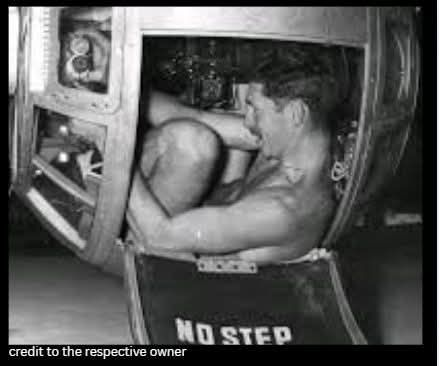During the chaos and uncertainty of World War II, few aircraft became as iconic as the B-17 Flying Fortress. Known for its heavy defensive armament, this bomber was designed not just to carry bombs over enemy territory, but to survive relentless attacks from enemy fighters. Yet, among all its impressive weaponry, one feature stood out for its sheer danger: the ball turret.
Positioned beneath the plane’s belly, the ball turret was a cramped, metallic sphere that could barely hold a single gunner. Inside, the airman had to curl into a fetal position, his body contorted to fit the tiny space, facing the open sky and inevitable enemy fire. Armed with twin .50 caliber Browning machine guns, the gunner’s task was both crucial and horrifying: fend off attacking fighters while exposed to the elements and enemy flak. Every mission carried immense risk, with survival often depending on split-second reflexes and nerves of steel.

But the bravery of the B-17 crews extended beyond the air. On the ground, a dedicated team of armorers and mechanics worked tirelessly to ensure that every weapon, every engine, and every critical system functioned perfectly. They meticulously cleared jams, cleaned barrels, and inspected every belt of ammunition. Their work was not glamorous, but it was vital; each adjustment or repair represented a tangible chance for the men in the air to return home safely.
These unsung heroes ensured that the “Flying Fortress” could maintain its formidable presence in the sky. The combined efforts of airborne gunners risking life and limb, and ground crews laboring long hours in obscurity, highlight the complexity and human cost of aerial warfare. Victory was never just about strategy or superior firepower—it was about people, courage, and unyielding dedication in the face of unimaginable danger.
Every photograph of the B-17 in action is a silent tribute, capturing not just the aircraft, but the intertwined stories of valor, teamwork, and survival. These images remind us that history is as much about the unseen hands behind the scenes as it is about those who faced the storm head-on.